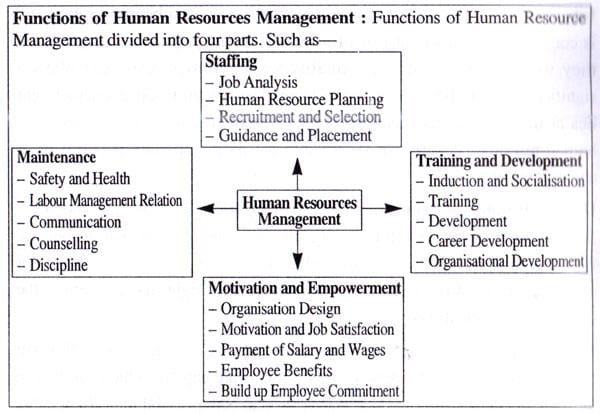Recruitment strategies hold great importance in an organization’s success. First, it helps to get the perfect people to manage operations. However, hiring is more challenging than it seems.
From sourcing candidates to finally preparing the offer letter, a recruiter faces numerous obstacles in acquiring talent. However, an effective hiring plan can streamline the process and improve the quality of hire. It smoothens the recruitment funnel and is a guideline for hiring managers throughout the process.
You might be thinking about how an effective hiring plan is created. Don’t worry; we have got your back. We have listed some essential steps to help you build a well-organized hiring strategy.

Steps to Develop a Scalable Hiring Plan
Assess Specific Needs
Before making any plan, you must analyze all the factors affecting the process. For example, you must consider candidate requirements, employee turnover, standard pay rates, etc. Also, explore different methods and prepare a list of recruitment techniques to help you acquire high-quality candidates. Finally, talk with the stakeholders and determine the company message that should be conveyed to the candidates.
The following tips can help you assess the hiring needs in a better way:
- Analyze the business growth and estimate the time the organization will expand its operations and workforce.
- Then, identify skills the company needs in the candidates to tackle the future workload.
Determine the Requirements and Prepare Engaging Descriptions

Once the current and future recruiting needs are identified, start analyzing the roles. It will help you determine skills the candidates should possess to perform the job effectively. Then, outline the responsibilities of the position and prepare creative job descriptions to attract candidates. Also, highlight the employee benefits you offer so that job seekers are encouraged to apply.
You can effectively determine the job requirements and create descriptions in these ways:
- Perform job analysis and note down the essential tasks candidates must comprehend. Take the manager’s assistance if necessary.
- Study the target audience and keep the wording simple, so the message is conveyed to the maximum number of people. Define the job benefits concisely.
Make a Plan for Conducting Interviews
Ensure an effective screening process at your disposal and make a plan to manage the interviews. In-person interviews give you a better idea of the candidate, and you can determine whether he will be a fit. So, emphasize the pre-planning of interviews.
Here are some points that can help you keep the interviewing process organized:
- First of all, select the best suitable interviewing format for your organization. Then, select the interview questions so you swiftly get the applicant’s necessary details.
- If the job requires performing a practical assessment, keep it ready. Also, define candidate selection standards to increase the quality of hire.
Identify the Tools you Need
Now that you have prepared a plan to address 60% of activities, you will need efficient tools to execute the plan. You can use digital tools for different purposes and ensure you get the most out of every task. Usually, recruiters utilize technology to screen candidates, saving them much time. Moreover, AI-backed systems help to reach a vast number of job seekers.
You can identify the required tools and resources by going through the below tips:
- Identify the significant hiring challenges and search tools to solve them. Then, consider how they can help you streamline the workflow.
- Ensure that these tools can align with your hiring strategies and fulfill all your needs.
Define a Budget
Advertisements, job fairs, employer branding, etc., costs are involved in the hiring process, and you must control them. So, considering the previous cost per hire, you will need an adequate budget for future talent needs. In addition, it will help the hiring manager allocate funds to the right place.
You can master recruitment budgeting in these ways:
- Estimate the number of people the organization requires in a year and consider the costs incurred by hiring them. Then, allocate the funds to different channels and try to save money wherever possible.
- Run timely evaluations and track the return generated from every channel.
Establish a Candidate Selection Process
Candidate selection is the trickiest task for recruiters, so you must set standards. For example, you must define the number of interview rounds and break them down into HR rounds, aptitude, technical, etc. In addition, organizations are now emphasizing candidates’ personality traits and technical skills, using pre-employment assessments to determine whether the applicant will fit in the company culture.
Go through these points to define an effective selection process:
- Personalize the process based on the job role and involve expert persons in interviews and selection.
- Consider employee background and reference checks to ensure the high credibility of the applicants.
Assess and Optimize your Plan As you Go
Making an effective hiring plan continues after the selection process. Therefore, you must evaluate your strategy at multiple intervals and constantly make changes. You can determine the effectiveness of the method by measuring different metrics.
Below mentioned are some tips to evaluate the recruitment strategy:
- Quarterly or annually, measure time to hire, cost per hire, and quality of hire. Identify the drawbacks and make changes in the process whenever necessary.
- Send out an anonymous employee feedback survey to the new hires to ask which part of the process they liked the best. This way, you can also identify their issues and take their suggestions.
Final Thoughts
As said earlier, a recruitment plan works as a guide for your hiring team. Creating one may take time and effort; however, it isn’t done once the plan is made. You must adapt to the ever-changing business needs and evolve the strategy accordingly.
Fluctuations in business demands and circumstances might result in a different scenario than you expected, so you must prepare an adaptable plan. So, unforeseen challenges can be addressed quickly.
What are you looking For?
- hiring plan
- strategic hiring plan template excel
- how to create a hiring plan
- annual hiring plan
- plants that are hiring near me
- example hiring plan
- what does hiring plan mean


